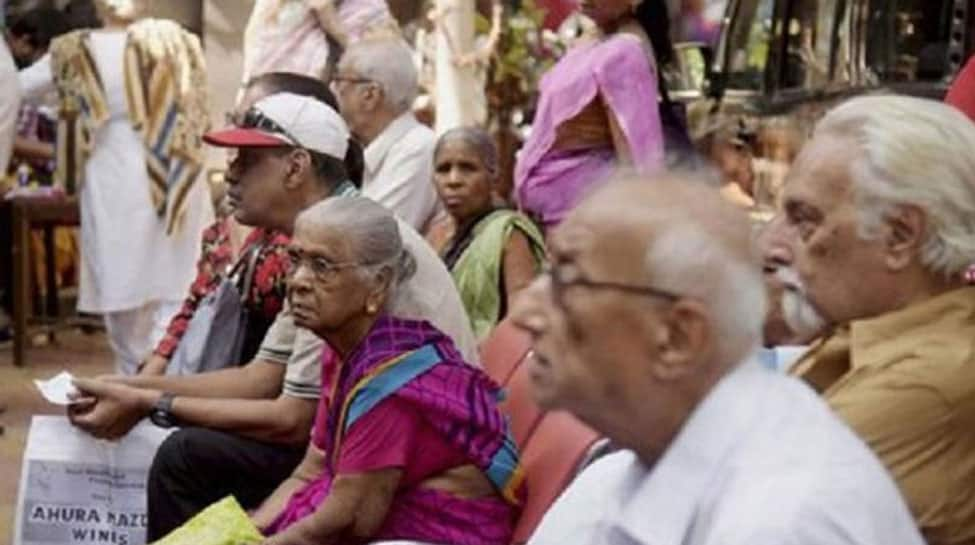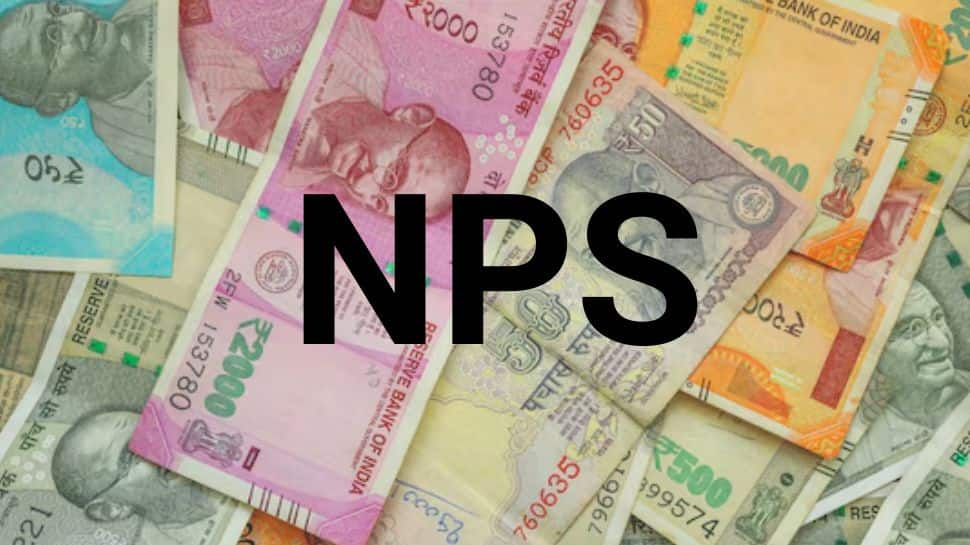Business
1-Time, 1-Way Switch Facility From UPS To NPS Available For Central Govt Employees–What Happens To Govts 4% Differential Contribution?

The Finance Ministry has introduced a one-time, one-way switch option for Central Government employees under Unified Pension Scheme (UPS) to shift to the National Pension System (NPS).
“It has been decided that a one-time, one-way switch facility from UPS to NPS shall be made available to all Central Government employees who have opted for UPS. This switch facility may be exercised by UPS optees any time not later than one year prior to the date of superannuation or three months prior to the deemed date of retirement in case of voluntary retirement, as applicable,” Finance Ministry said in an Office Memorandum dated August 25.
NPS UPS Switch: Cases Of Resignation
Similar provisions will be made for resignation and cases of Rule 56J, with minor modifications as necessary. If switch facility not exercised as per aforesaid timelines, the employee shall continue under UPS by default.
NPS UPS Switch: Who Can’t Avail This Facility
The switch facility will not be allowed in case of removal, dismissal or compulsory retirement as a penalty or for cases where disciplinary proceedings are ongoing or contemplated.
NPS UPS Switch: What Happens To Govt’s 4% Differential Contribution?
Once the switch facility is availed, the provisions of the PFRDA (Exit & Withdrawal under NPS) Regulations, 2015 shall apply. The concerned employee shall cease to be eligible for assured payouts and UPS benefits. The Government’s differential contribution of 4 percent at default investment pattern will be worked out and shall be credited to the individual’s NPS corpus at the time of exit.
Business
CBDT acts against intermediaries filing tax returns with bogus deduction claims – The Times of India

NEW DELHI: After a massive nationwide operation, Central Board of Direct Taxes acted against several intermediaries involved in filing income tax returns with bogus claims of deductions and exemptions under the Income Tax Act.The move followed actions in July 2025, covering 150 premises, during which more than 102 suspicious RUPPs were identified for their role in facilitating bogus donation-linked deductions. Data analytics had flagged over 2 lakh taxpayers who claimed suspicious deductions under Section 80GGC, adding up to Rs 5,500 crore routed through suspicious or non-existent RUPPs and a similar amount of bogus donations to non-genuine charitable organisations, said officials.The enforcement findings have also prompted reversals of bogus deductions by taxpayers. Around 54,000 have already corrected their filings and withdrawn ineligible claims worth approximately Rs 1,400 crore and updated their returns after CBDT nudged them to revise their returns.Most of these taxpayers claimed deductions below Rs 5 lakh and a few companies claimed very high deductions.The exercise also revealed how intermediaries had established networks of agents to file returns with incorrect claims on commission basis. An intermediary was found to be advertising guaranteed refunds in cinema halls and on social media. It was found that there was a syndicate of professionals who was operating through WhatsApp and Telegram channels to find taxpayers looking at reducing tax liability through fake donations to RUPPs or charitable organisations.Instances of misuse of CSR-linked trusts, which facilitated bogus donation receipts in exchange for cash-back, were found during the probe.“It was observed that huge amounts of bogus claims have been made on account of donation RUPPs or charitable institutions and reduced their tax obligations and have also claimed bogus refunds.Evidence gathered from enforcement actions indicated that RUPPs many of which were non-filers, non-operational at their registered addresses, and are not engaged in any political activity were being used as conduits for routing funds, hawala transactions, cross border remittances and issuing bogus receipts for donations,” an official statement said.
Business
Hitting The ‘High Notes’ In Ties: Nepal Set To Lift Ban On Indian Bills Above ₹100

Last Updated:
The move is expected to provide an immediate and substantial boost to Nepal’s economy, particularly its tourism and hospitality sectors, which rely heavily on Indian visitors

The original restrictions on high-value Indian currency were severely tightened in Nepal following the 2016 demonetisation in India, which withdrew old ₹500 and ₹1,000 notes. Representational image
Nepal is preparing to officially permit the circulation of Indian currency notes above the ₹100 denomination, marking the end of a nearly decade-long ban that has significantly complicated cross-border travel, trade, and remittances between the two countries. The move, currently in its final stages with the Nepal Rastra Bank (NRB) preparing to publish the official notice, follows a crucial regulatory shift by India’s central bank.
The original restrictions on high-value Indian currency were severely tightened in Nepal following the 2016 demonetisation in India, which withdrew old ₹500 and ₹1,000 notes. Even after new notes were introduced, Nepal maintained the ban on all denominations above ₹100 due to concerns over the smuggling of counterfeit currency and security risks. This policy forced Indian tourists and Nepali migrant workers to carry large wads of low-denomination notes, leading to financial hardship, confusion, and frequent incidents of travellers being detained or fined for inadvertent violations.
India’s Regulatory Green Light
The pivotal change that has allowed Nepal to reverse course came from the Reserve Bank of India (RBI). In late November 2025, the RBI amended its Foreign Exchange Management Regulations, formally allowing individuals to transport higher-denomination Indian rupee notes across the border.
The new rule specifies that individuals can carry Indian currency notes of any amount in denominations up to ₹100. Crucially, they are now permitted to carry notes above ₹100 up to a total value of ₹25,000 in either direction—both into Nepal and back into India. This amendment effectively removed the main legal constraint that previously limited the practical utility of higher-value notes for travellers.
Boosting Tourism and Easing Remittances
The lifting of the ban is expected to provide an immediate and substantial boost to Nepal’s economy, particularly its tourism and hospitality sectors, which rely heavily on Indian visitors. Businesses in border towns, casinos, and pilgrimage routes that cater to Indian tourists have been vocal in lobbying for this change, as the previous restrictions limited spending power.
Furthermore, the decision is a massive relief for the estimated two million Nepali migrant workers in India, who previously faced major security risks when bringing home their earnings in small denominations. The Nepal Rastra Bank (NRB) spokesperson, Guru Prasad Poudel, confirmed that the process is nearing completion, stating they are preparing to publish the notice in the Nepal Gazette before issuing circulars to banks and financial institutions, ushering in a new era of smoother financial integration between the two neighbours.
December 14, 2025, 01:21 IST
Read More
Business
8th Pay Commission: Railways to trim costs to accommodate higher wages; maintenance, procurement, energy sectors in focus – The Times of India

Railways is implementing focused cost-cutting initiatives across maintenance, procurement and energy sectors to fortify its financial position before dealing with increased wage expenses anticipated from the Eighth Pay Commission recommendations.Established in January 2024, the Eighth Pay Commission must submit its recommendations within an 18-month timeframe.The previous Seventh Pay Commission led to wage increases of 14-26% for railway staff. Its implementation began in 2016, with tenure concluding in January 2026. The national transporter is currently emphasising expense reduction to enhance operational efficiency over the next two years to prevent financial strain from the forthcoming recommendations.The Seventh Pay Commission increased the wage expenditure by Rs 22,000 crore, including salaries and pensions, whilst the current projection suggests a potential rise of Rs 30,000 crore. “We have planned for the additional fund requirement,” a senior official told Economic Times, stating that internal accruals, combined with projected savings and increased freight revenue, would cover the expenses.Indian Railways recorded an operating ratio (OR) of 98.90% in fiscal 2024-25, resulting in net revenue of Rs 1,341.31 crore. For fiscal 2025-26, the target OR is 98.43% with anticipated net revenue of Rs 3041.31 crore.Officials anticipate annual energy savings of Rs 5,000 crore following network electrification completion.Additionally, yearly payments to Indian Railway Finance Corporation (IRFC) are expected to decrease in fiscal 2027-28, as recent capital expenditure has been funded through gross budgetary support (GBS).Officials confirm no plans for new short-term borrowing. “Annual freight earnings will also rise by Rs 15,000 crore when higher wages need to be paid in 2027-28,” the official stated.The Seventh Pay Commission implemented a 2.57 fitment factor, raising minimum basic pay from Rs 7,000 to Rs 17,990. Central trade unions advocate for a 2.86 fitment factor for the Eighth Pay Commission, potentially increasing the national transporter’s wage bill by over 22%.“Railways will ensure its finances are in a good condition to absorb the hit. Funds would not be an issue,” the official confirmed.The Railways has allocated Rs 1.28 lakh crore for staff costs in 2025-26, increased from Rs 1.17 lakh crore in 2024-25. Additionally, Rs 68,602.69 crore is earmarked for the pension fund in FY26, up from Rs 66,358.69 crore in FY25.
-

 Politics6 days ago
Politics6 days agoThailand launches air strikes against Cambodian military: army
-

 Sports1 week ago
Sports1 week agoAustralia take control of second Ashes Test | The Express Tribune
-

 Tech1 week ago
Tech1 week agoWIRED Roundup: DOGE Isn’t Dead, Facebook Dating Is Real, and Amazon’s AI Ambitions
-

 Politics6 days ago
Politics6 days agoZelenskiy says Ukraine’s peace talks with US constructive but not easy
-

 Fashion6 days ago
Fashion6 days agoGermany’s LuxExperience appoints Francis Belin as new CEO of Mytheresa
-

 Business1 week ago
Business1 week agoNetflix to buy Warner Bros. film and streaming assets in $72 billion deal
-

 Politics1 week ago
Politics1 week ago17 found dead in migrant vessel off Crete: coastguard
-

 Business3 days ago
Business3 days agoRivian turns to AI, autonomy to woo investors as EV sales stall












